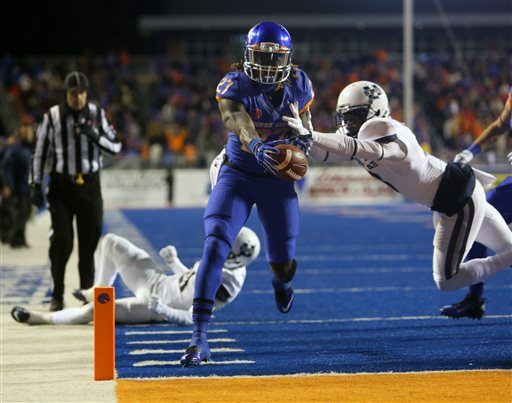A new academic study finds that college football games in which the point spread and over-under total remain up for grabs late tend to enjoy higher television ratings than ones in which the gambling winners and losers appear as foregone conclusions early.
“Ratings are higher in contests where the scoring margin moves closer to the closing line point spread, despite the fact that the outcome of the contest is already largely determined,” two professors write. “Evidence also suggests consumers are sensitive to outcomes relative to the totals market. Considering the size of television broadcast rights contracts, the NCAA and its member universities stand to benefit when uncertainty relative to wagering market outcomes is increased.”
The dismal-science-meets-barstool-common-sense article appears in July’s edition of Economics Letters. University of Illinois Associate Professor Scott Tainsky and Texas A&M Assistant Professor Steven Salaga authored the academic article entitled, “Betting Lines and College Football Television Ratings.”
The paper’s conclusion—that leagues benefit from gambling—clashes with the long-held idea, gleaned from famous fixing scandals, that sports gaming harms athletics, particularly amateur athletics. While the NBA and the UFC—the latter owned in part by casino owners—publicly endorse the idea of a wider legalization of sports gaming, the NCAA remains steadfastly opposed despite the beneficial influence on ratings. Unpaid players, particularly ones compromised morally or through indebtedness, have embarrassed the NCAA through collusion with bookies. The Boston College basketball point shaving of the late 1970s and a star Northwestern running back’s intentional fumble to win a bet in the 1990s stand as instances in which players put their finances ahead of their teams.
But the scholars suggest that gambling offers benefits to college athletics. Tainsky and Salaga suggest that the ratings that drive the revenues stem in no small part from the wagerers watching.
“We find that both average and second-half ratings are higher for contests where late in the game the scoring margin moves closer to the point spread,” Professors Tainsky and Salaga write. “Results also suggest that consumers are sensitive to contest outcomes relative to the totals market. This suggests a substantial portion of the television viewing audience stays tuned in to see the outcome of college football games relative to the wagering market in spite of the NCAA’s efforts.”
One could conduct an academic study to reach this conclusion. Or, alternatively, one could observe a degenerate gambler screaming “go for two” at his television in the aftermath of an Appalachian State touchdown in a blowout of Troy late in the fourth quarter of a weeknight game.

COMMENTS
Please let us know if you're having issues with commenting.